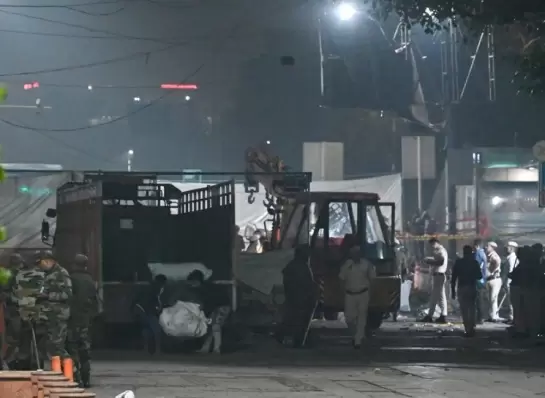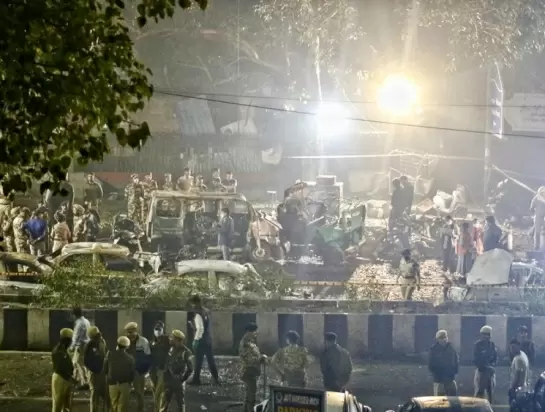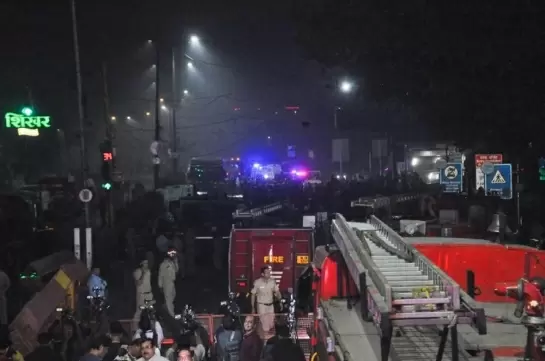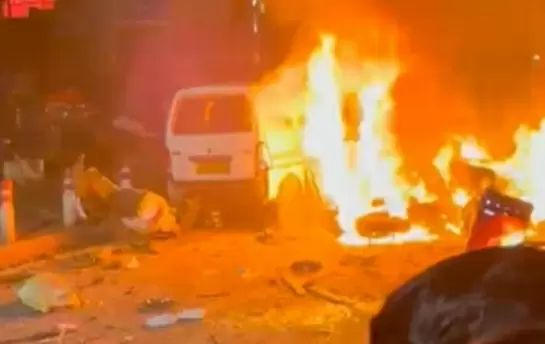Red Fort Blast: How Mobile Phone Dump Data Is Helping Investigators
12-November-2025

In the wake of the car blast near Delhi’s historic Red Fort that has left at least 13 people dead and dozens injured, investigators are deploying a tool that sounds technical but is straightforward in its aim: what is known as “mobile phone dump data”.
This term refers to a broad sweep of mobile-phone records from an area and time-period of interest, collected by authorities to pinpoint which devices were active around the scene of the attack, how they moved, and whether any played a suspicious role.
On the evening of 10 November 2025 a vehicle exploded near Gate 1 of the Red Fort metro station in Old Delhi. The sudden blast shattered the calm of the area, damaged multiple vehicles and infrastructure and triggered a full-scale security and forensic response.
In parallel with on-site work, the investigation now centres on digital evidence: police, under the cover of anti-terror powers, have asked telecom operators for “dump” files covering several mobile-tower zones across Delhi for the time-window around the explosion.
What the phrase “mobile phone dump data” means here is that investigators obtain logs from mobile-network providers showing which handsets connected to particular towers in the sector, when and how often, where they handed over from one cell to another and compiled for all devices in the area during the blast period.
From this large volume of data the team aims to pick out the devices that stand out: for example those that appeared briefly, that travelled into the area just before the blast and left shortly after, or that moved in tandem with other phones.
Once such devices are flagged, further work can follow, such as tracing call-detail records (CDRs), checking for associated social-media activity, and then perhaps seizing the physical handset for forensic extraction.
In the Red Fort case the use of mobile-dump data matters because it allows investigators to cast a wide digital net quickly across a dense urban environment and then narrow down leads.
Given the scale of the incident and its location among crowded streets and tourist zones, many mobile devices will be innocent by-standersbut by layering the mobile-data sweep with CCTV footage, vehicle registration trails and social-media logs, the probe team hopes to distinguish normal activity from what may be orchestrated.
The fact that the vehicle used in the explosion (a white Hyundai i20) was parked in a lot nearby for hours, and later moved before the blast, suggests a planned operation rather than a simple accident.
While the “dump” method gives investigators a large dataset, one limitation lies in precision: mobile-tower records cannot always pinpoint exact positions. They can tell a device was connected in a given cell-sector, but not exactly whether the person was standing 5 metres or 500 metres away from the blast location.
Hence the records provide indication of presence, not direct proof of culpability. Also, because all phones in the area are included, filtering out innocent devices and focusing on suspect ones is laborious.
What the investigators are doing in Delhi, therefore, is combining tower-dump data with social-media monitoring, call networks and movement patterns in order to build a chain of evidence that could tie mobile-phone behaviour to the blast sequence, escape routes and possible conspirators.
At present, agencies state that mobile-phone dump data from “several locations across Delhi” is being compiled and analysed, as part of a broader counter-terror response that includes invocation of the Unlawful Activities (Prevention) Act (UAPA) and use of the National Investigation Agency (NIA).
With the death toll still rising, investigators say they are taking “all possibilities” into account and moving quickly to lock in leads, mobile-data sweeps being one of the key early moves.
As the probe advances, the success of the digital sweep will depend on how effectively the thousands of collected device-records can be winnowed down, cross-linked with other evidence and then tied meaningfully to individuals.
For the families of the victims and for security authorities alike, the hope is that this blend of traditional forensics and mobile-phone data will provide the breakthrough needed to trace the full chain of events behind the Red Fort car blast. - TWL Bureau
Rs 84 Lakh Cash, Luxury Car Recovered In Rs 69 Crore Chit Fund Case
TMC Flags Confusion Over EC Definition Of ‘Relative’ In Bengal SIR
Special Intensive Revision Sparks Concern Across Tamil Nadu
Families Sue OpenAI Alleging GPT-4o Triggered Suicides, Mental Harm
Govt’s New EEZ Norms Prioritise Fisher Cooperatives, Deep-Sea Value Addition









